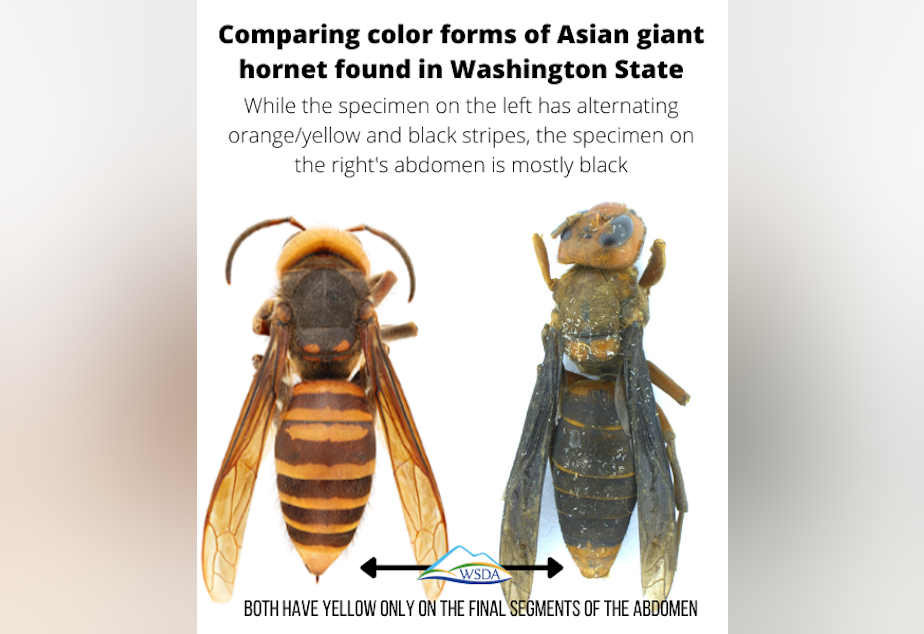Asian giant hornet carcass found in Snohomish County

Scientists have confirmed an Asian giant hornet has been found in Snohomish County, about 50 miles farther south than the invasive insect has been spotted before in North America.
A Marysville resident saw the male hornet, dead and desiccated, on his lawn and reported it to state agriculture officials on June 4.
“There really isn’t enough information to even speculate how it got there or how long it had been there,” said Sven Spichiger with the Washington State Department of Agriculture.
The 1.5-inch long predator is the first so-called ‘murder hornet’ found this year in Canada or the United States.
The supersized insects threaten honeybees—also non-native to North America—that pollinate many important crops. The hornets are not aggressive toward humans, but their sting is extremely painful.
Given the Marysville carcass’s degraded condition and the fact that male hornets don’t normally emerge until mid-July, Spichiger said the hornet had probably been dead since at least last fall.
Sponsored
“It was likely sitting dead in a protected area and then somehow became dislodged and ended up on the lawn,” he said.
He emphasized that a single hornet carcass does not necessarily suggest the presence of an active hornet nest. A possible scenario is that the hornet found its way into a shipping container in an Asian port and was long dead by the time it fell onto American soil.
Still, officials are asking citizen scientists in Snohomish and King counties to help by looking out for the giant hornets and setting up traps to catch them.
“We need to keep an eye on the area just to ensure that it wasn’t from an active nest last year, which is also a possibility,” Spichiger said.
“If you see something, say something,” Justin Bush with the Washington Invasive Species Council said, echoing the anti-terrorism slogan of the U.S. Department of Homeland Security.
Sponsored
“We know how to prevent and stop invasive species, but we can’t do this alone,” he said.
The Marysville specimen has the same large, orange head as hornets found previously in Whatcom County and southern British Columbia but lacks the black-and-yellow stripes those hornets had.
Agriculture officials found and eradicated a giant hornet nest in Blaine, near the Canadian border, in October. They are launching an effort to set up 1,200 hornet traps in Whatcom County starting July 1.
Agriculture officials say the hornets found in 2019 and 2020 were genetically similar to members of their species from Japan and Korea. Spichiger said the Marysville specimen was genetically similar to Asian giant hornets from Southeast Asia.
Genetic evidence suggests the hornet has found its way to North America on at least three occasions in the past few years.
Sponsored
“It is entirely possible for single hornet specimens to get from the other side of the world to Washington or anywhere else in the United States because we do have such a vibrant global trade market here in Washington,” Spichiger said.
“With this intensive trade and maritime shipments of all kinds of goods, we can expect future exposures, if you will, to these kind of insects,” British Columbia provincial apiculturist Paul van Westendorp said.
Van Westendorp said a single queen of another invasive species of giant hornet, known as Vespa soror, was found buzzing around the Port of Vancouver in 2019.
Information from the Associated Press is included in this story.




